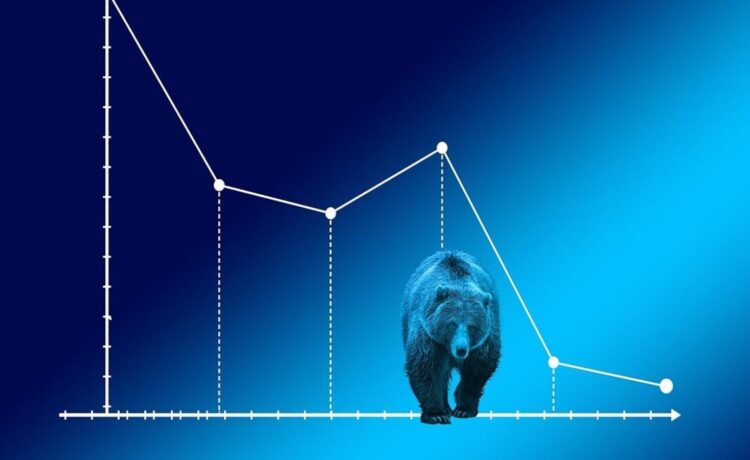Stock market crash: The Indian stock market continued witnessing selling pressure for the fourth consecutive session on Monday, February 10, with benchmark Sensex falling over 600 points and Nifty 50 moving near 23,350 on the downside in the intraday trade.
The BSE barometer Sensex opened at 77,789 against its previous close of 77,860 and dropped 753 points to the level of 77,106.89. Its NSE counterpart, the Nifty 50, opened at 23,544 against its previous close of 23,559.95 and fell 243 points, or 1 per cent, to the level of 23,317.25.
The selloff was widespread across segments and even more severe in the mid-and small-cap categories, as the BSE Midcap and Smallcap indices plunged over 2 per cent each.
The overall market capitalisation (m-cap) of BSE-listed firms fell to nearly ₹417 lakh crore from nearly ₹424 lakh crore in the previous session, making investors lose about ₹7 lakh crore in a session.
Around 2:20 PM, the Sensex was 704 points, or 0.90 per cent down at 77,156, while the Nifty 50 was trading at 23,335, lower by 225 points or 0.96 per cent.
Why is the Indian stock market falling today?
Experts pointed out the following five factors that could be behind the market selloff:
1. Trump’s tariff
US President Donald Trump has been dealing a blow to market sentiment due to his tariff policies. According to a Reuters report, Trump said he would announce new 25 per cent tariffs on Monday on all steel and aluminium imports into the US, in addition to the existing metals duties. The report further added that he plans to announce reciprocal tariffs on many countries by Monday or Tuesday next week.
2. Stretched valuation despite correction
The Sensex has corrected over 9 per cent from its all-time high of 85,978.25, hit on September 27 last year. However, despite this correction, the market valuation remains high, keeping investors cautious.
“It is important to understand that valuations in India continue to be on the higher side, particularly in the broader market. The market needs fundamental triggers like indications of GDP growth and earnings rebound. Until then the market is likely to move only in a range. Investors should stick to fairly valued high-quality large-caps,” said V K Vijayakumar, Chief Investment Strategist at Geojit Financial Services.
Valuation guru Aswath Damodaran believes the Indian stock market is the most expensive equity market in the world, and no amount of handwaving can justify its valuation.
3. Weak earnings continue weighing on sentiment
Weak corporate earnings remain a major factor behind the ongoing correction in the Indian stock market. Even though Q3 earnings have been marginally better than the last two quarters, it has failed to boost market sentiment.
4. Relentless foreign capital outflow
The Indian stock market has been witnessing a heavy foreign capital outflow since October last year. So far in February, foreign institutional investors (FIIs) have offloaded Indian equities worth over ₹10,000 crore. Overall since October, they have sold off Indian equities nearly worth ₹2.75 lakh crore.
“Selloff by FIIs is perhaps the biggest reason behind the recent market downturn. They continue to sell, while concerns over US tariff policies further weigh on sentiment,” said Prashanth Tapse, Senior VP of Research at Mehta Equities.
5. Rupee’s weakness
The Indian rupee hit a fresh record low on Monday. It slipped 49 paise to open at an all-time low of 87.92 against the US dollar as against Friday’s close of 87.43 per USD. The domestic currency has declined nearly 3 per cent this year, weighing on market sentiment.
A weak rupee signals economic weakness and accelerates foreign capital outflows, further dampening market sentiment.
Read all market-related news here
Read more stories by Nishant Kumar
Disclaimer: The views and recommendations above are those of individual analysts, experts, and brokerage firms, not Mint. We advise investors to consult certified experts before making any investment decisions.
Catch all the Business News , Market News , Breaking News Events and Latest News Updates on Live Mint. Download The Mint News App to get Daily Market Updates.
MoreLess





